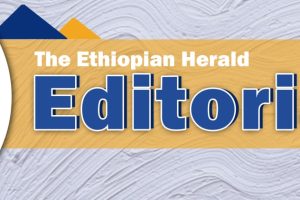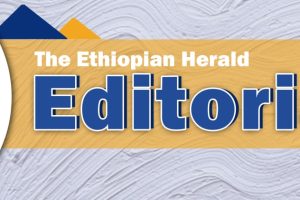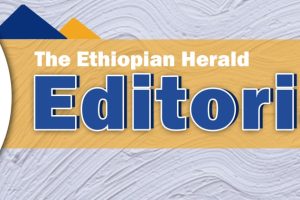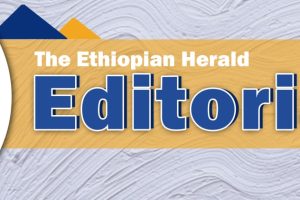
Accumulated foreign debt has been one of the major economic challenges that the nation had to face over the last couple of decades. Ethiopia has never been comfortable with its foreign exchange earnings and had to rely on grants and relatively higher level of loans to cover its budget deficits and foreign debt servicing expenses.
A country that does not repay its debts is doomed to disqualification by almost all financial institutions across the world.
Ethiopia’s transition from command economy to economic liberalization in early 199s was not easy particularly because the 17 years of civil war with liberation movements and poor level of agricultural productivity and output had forced the transition government to seek support from development partners and international financial agencies including the IMF and the WB.
Economic liberalization has not paid off in the short run but had been instrumental in lifting the lid on investment ceilings with the introduction of new investment policies that were subsequently reviewed to lure foreign and local investors to beef up the shattered economy.
Bedsides, recurrent drought spells further complicated the country’s efforts towards economic growth. With the introduction of ambitious Growth and Transformation Programs for over a decade, the government launched huge mega projects that mostly focused on energy development and infrastructure.
Despite the promulgation of laws and policies that could have been exploited by the private sector, the government took the lion’s share of national investment which exceeded more than70 per cent of total investments in the country most of which were started with foreign long term and short term with the intention that the outputs from public investments would help to cover stable repayment of outstanding foreign debt.
However, lack of meaningful monitoring and evaluation on the mismanagement and misappropriation of public enterprises like METEC and a number of sugar factories and more significantly technical and financial mismanagement of mega projects like GERD which was funded by the peoples of Ethiopia frustrated the national efforts to reduce the level of foreign debt the country had to shoulder. Given all these hurdles the country has continued to register a double digit growth for almost 15 years.
Reports from the Ministry of Finance and Economic Cooperation recently issued indicated that Ethiopia total loan in hard currency equivalent to Birr 830.6 Billion Birr from some 50 countries.
Despite the civil unrest and ethic based conflicts that hit its crescendo over that past four years including the fiscal year that has ended a couple of months back, the country had managed to repay a foreign debt equivalent to 22 billion birr over the last fiscal year and had planned to pay another 25 billion Birr over the current fiscal year.
Over the last ten years, the country had paid back an equivalent of 39 billion Birr in foreign currency. Ethiopia had taken loans from Japan, African Development Bank, Korea and Arab Bank in soft loans. The government has already decided to shift from short term loans to long term ones in the form of concessional loans which are repayable over an average of 38 years.
Lower and limited types of exports had characterized Ethiopia’s foreign trade which continuously suffered from huge imbalance. For instance on the average Ethiopia imports goods estimated at 18 billion USD every year while it exports goods worth 3 billion USD on the average.
Other factors including smuggling of foreign currency, coffee live animals and gold nuggets outside of the country has become a greater challenge that robs the country from the foreign currency earnings it could have received.
What strategies did the government put in place to reduce the galloping foreign debt and lack of foreign currency that it is facing? Partial privatization of the national carrier, the EAL Group, Maritime and Transit Corporation, Railway Lines and other related public enterprises are expected to boost the foreign exchange earnings of the country while the government has also considered private sector investments in mining and multiple projects in the energy sector.
In my opinion, further diversification of export commodities, introducing strict quality and quantity assessment on export goods is highly critical for increasing foreign exchange earnings that the country is entitled to get. In terms of diversification the country needs to increase its export of commodities like honey and honey wax, raw incenses, ginger and crocodile skins, castor and a number of agricultural commodities that are demanded on the world market.
It is also profitable to increase the supply of cut flowers, vegetables and quality fruits with value added to markets closer and afar. For instance, despite its comparative advantage to export meat to the markets of the Middle East, Ethiopia is still unable to fulfill the demands of meat in these countries.
I have the opinion that one of the biggest challenges the country is facing is related to ensuring the quality of export goods. Exporting high quality commodities is not a single and independent variable. It is intrinsically linked to standardized packing, value adding and organizing logistic services and timely response to the needs of the importers.
Ethiopia has ample markets in Africa for the industrial commodities that the country can produce. Among other things, far more industrial commodities can be exported if the industrial parks are encouraged to operate with their full capacity and are provided with uninterrupted energy resources and skilled human power and quality raw materials. Unless these are put in place, it would still be difficult for the country to reduce its foreign debt.
Given the fact that Ethiopians and citizens of Ethiopian origin are potential sources for the foreign currency the country needs. The country has so far not been able to use its comparative advantage in this respect.
Ethiopia needs a huge amount of foreign currency because the economy of this country is expanding rapidly and instead of focusing only on loans, it would be very important to effectively engage in import substitution of a wider spectrum particularly in the agriculture sector.
Ethiopia has already embarked on halting import of wheat and the government has already devised a three year strategy to locally produce quality wheat with the ultimate goal for exports.
The government has already identified which industries could be revived in a short run and long run program and which ones could be transferred to the private sector to shorten the time it would take to obtain foreign currency to accelerate debt repayment with ultimate self-reliance in national budget allocation.
Increasing the current scale of remittance to a greater level is another means for gaining foreign currency which would enable the country to repay foreign debts. In my opinion the government needs to come up with a detailed strategy in which sector offices and regional governments should share responsibilities while the federal government could coordinate and facilitate easy flow of remittance.
In this modest note for my readers, I have taken up the issue of debt repayment and have raised some basic points. All this however depends upon ensuring lasting peace in the country. With the new year just at the corner, all concerned Ethiopians here and abroad need to work together to see the mid-level developed country about we have all been talking about.
The Ethiopian Herald September 4, 2019
BY SOLOMON DIBABA




